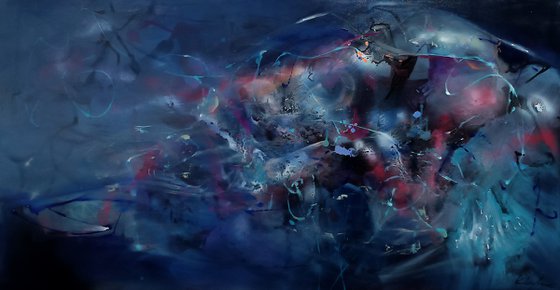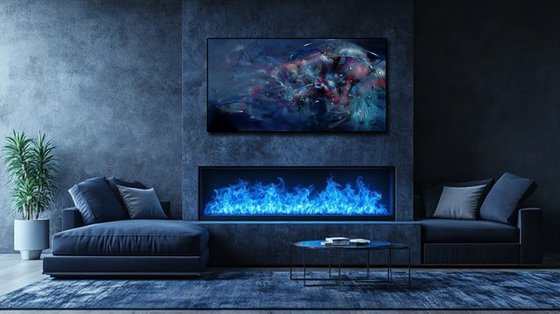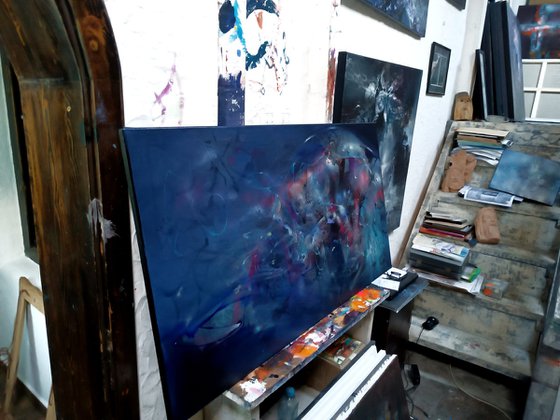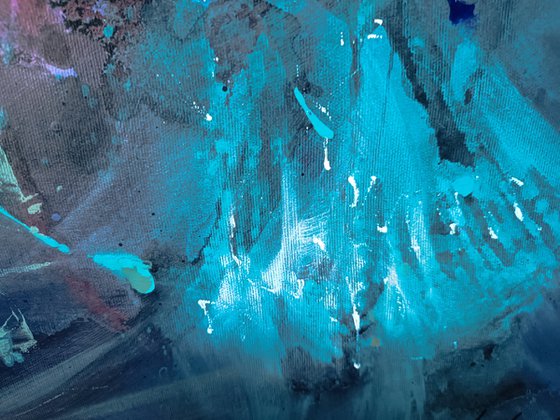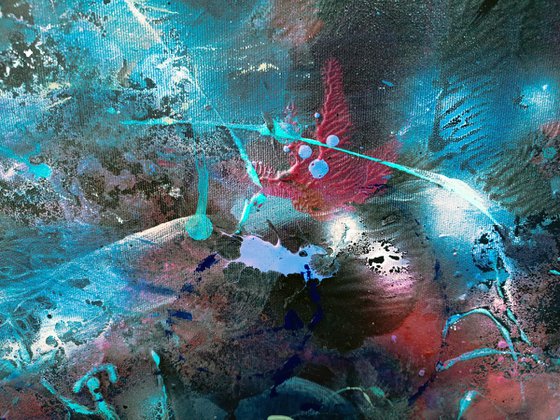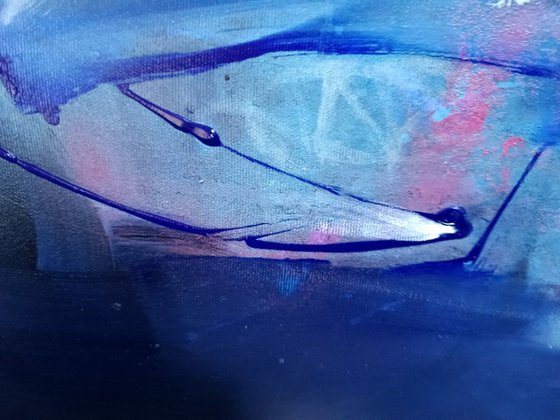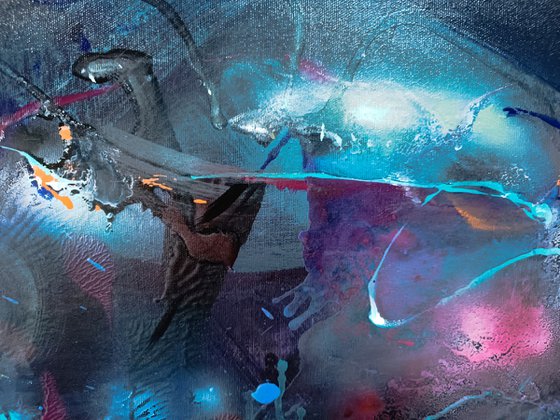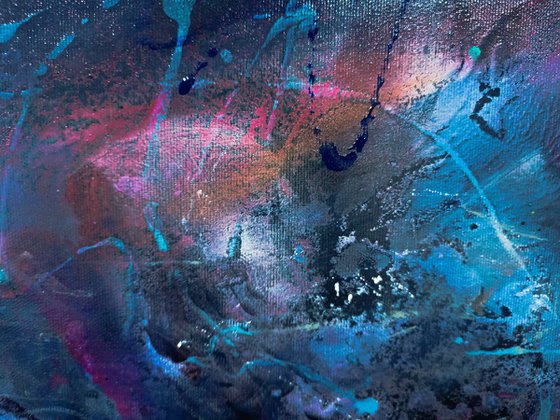Main Navigation
Original artwork description:
Where the Night Forgets Itself in the Eyes of Dawn
In this masterful work from The Wonderful Morning Dreams of Alice, Ovidiu Kloska transcends the boundaries of abstraction to create not just an image, but a metaphysical event—a luminous fracture in the veil between worlds.
The painting pulses with the energy of becoming. It does not depict a moment; it summons it. A spectral turbulence emerges from deep ultramarine voids, where flashes of crimson, cyan, and ghost-white vibrate like memory fragments returning from a forgotten cosmos. Here, pigment behaves like breath, and gesture like invocation.
The composition evokes the metaphysical lineage of lyrical abstraction, echoing the silent immensities of Zao Wou-Ki—yet with a more fevered urgency. While Wou-Ki's canvases dwell in the tranquil breath of Tao, Kloska’s vision is charged with apocalyptic tension. His brushstrokes collide rather than float. His void is not serene—it is trembling with myth, wound, and revelation.
This work is also haunted by the unseen presence of Za Wichi, the mythic entity that traverses the series as a symbol of inner metamorphosis. Though never visible, his imprint is felt in the distortion of space, in the spectral gestures that fracture the surface. Za Wichi does not appear—he displaces. His presence bends the matrix of matter, opening it toward the sacred.
We are no longer in the realm of painting as depiction. This is painting as cosmogenesis. A ritual of light, color, and dissolution. A sacred choreography of spirit and chaos. It resonates with the contemporary need to reclaim mystery, to touch the edge where self dissolves into the unknown.
Ovidiu Kloska, in this work, does not merely paint—he remembers on canvas the echoes of the metaphysical. And through that remembrance, we too begin to awaken.
Materials used:
acrylic on stretched canvas varnished
Tags:
#metaphysical art #inner landscape #abstract poetry #spiritual abstraction #emotional canvas #sacred gesture #kloska artwork #artist voice #dream series #contemporary visionsEyes of Dawn (2025) Acrylic painting
by Kloska Ovidiu
20 Artist Reviews
£1,306.8
- Acrylic painting on Canvas
- One of a kind artwork
- Size: 130 x 70 x 2cm (unframed) / 130 x 70cm (actual image size)
- Ready to hang
- Signed on the front
- Style: Expressive and gestural
- Subject: Landscapes, sea and sky
Loading
Original artwork description
Where the Night Forgets Itself in the Eyes of Dawn
In this masterful work from The Wonderful Morning Dreams of Alice, Ovidiu Kloska transcends the boundaries of abstraction to create not just an image, but a metaphysical event—a luminous fracture in the veil between worlds.
The painting pulses with the energy of becoming. It does not depict a moment; it summons it. A spectral turbulence emerges from deep ultramarine voids, where flashes of crimson, cyan, and ghost-white vibrate like memory fragments returning from a forgotten cosmos. Here, pigment behaves like breath, and gesture like invocation.
The composition evokes the metaphysical lineage of lyrical abstraction, echoing the silent immensities of Zao Wou-Ki—yet with a more fevered urgency. While Wou-Ki's canvases dwell in the tranquil breath of Tao, Kloska’s vision is charged with apocalyptic tension. His brushstrokes collide rather than float. His void is not serene—it is trembling with myth, wound, and revelation.
This work is also haunted by the unseen presence of Za Wichi, the mythic entity that traverses the series as a symbol of inner metamorphosis. Though never visible, his imprint is felt in the distortion of space, in the spectral gestures that fracture the surface. Za Wichi does not appear—he displaces. His presence bends the matrix of matter, opening it toward the sacred.
We are no longer in the realm of painting as depiction. This is painting as cosmogenesis. A ritual of light, color, and dissolution. A sacred choreography of spirit and chaos. It resonates with the contemporary need to reclaim mystery, to touch the edge where self dissolves into the unknown.
Ovidiu Kloska, in this work, does not merely paint—he remembers on canvas the echoes of the metaphysical. And through that remembrance, we too begin to awaken.
Materials used:
acrylic on stretched canvas varnished
Tags:
#metaphysical art #inner landscape #abstract poetry #spiritual abstraction #emotional canvas #sacred gesture #kloska artwork #artist voice #dream series #contemporary visions14 day money back guaranteeLearn more
